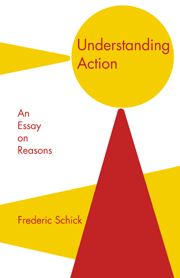Summary
A CHANGE OF HEART
Writing about his experiences in the Spanish Civil War, George Orwell tells this story. He had gone out to a spot near the Fascist trenches from which he thought he might snipe at someone. He waited a long time without any luck. None of the enemy made an appearance. Then, at last, some disturbance took place, much shouting and blowing of whistles followed, and a man
… jumped out of the trench and ran along the parapet in full view. He was half-dressed and was holding up his trousers with both hands as he ran. I refrained from shooting at him. … I did not shoot partly because of that detail about the trousers. I had come here to shoot at “Fascists”; but a man holding up his trousers isn't a “Fascist,” he is visibly a fellow-creature, similar to yourself, and you don't feel like shooting at him.
Why did Orwell put down his gun? We have a general theory of action that ought to be of use to us here. The theory says that people's actions issue from their beliefs and desires, that to explain what someone did we need to know only what he believed and what he wanted. Suppose that some person wanted this and believed that to get it he had to do that.
- Type
- Chapter
- Information
- Understanding ActionAn Essay on Reasons, pp. 1 - 8Publisher: Cambridge University PressPrint publication year: 1991
- 1
- Cited by



